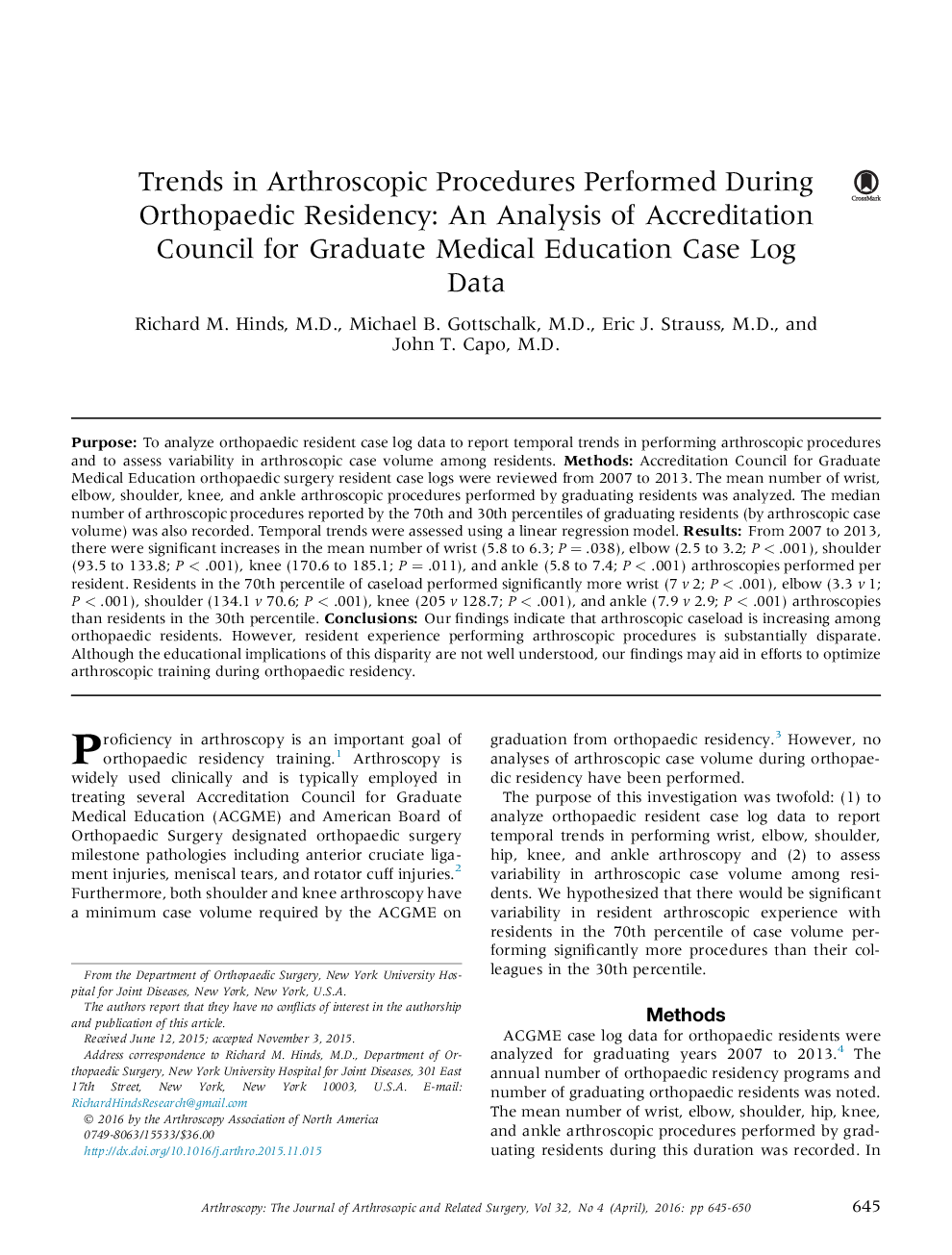| Article ID | Journal | Published Year | Pages | File Type |
|---|---|---|---|---|
| 4042177 | Arthroscopy: The Journal of Arthroscopic & Related Surgery | 2016 | 6 Pages |
PurposeTo analyze orthopaedic resident case log data to report temporal trends in performing arthroscopic procedures and to assess variability in arthroscopic case volume among residents.MethodsAccreditation Council for Graduate Medical Education orthopaedic surgery resident case logs were reviewed from 2007 to 2013. The mean number of wrist, elbow, shoulder, knee, and ankle arthroscopic procedures performed by graduating residents was analyzed. The median number of arthroscopic procedures reported by the 70th and 30th percentiles of graduating residents (by arthroscopic case volume) was also recorded. Temporal trends were assessed using a linear regression model.ResultsFrom 2007 to 2013, there were significant increases in the mean number of wrist (5.8 to 6.3; P = .038), elbow (2.5 to 3.2; P < .001), shoulder (93.5 to 133.8; P < .001), knee (170.6 to 185.1; P = .011), and ankle (5.8 to 7.4; P < .001) arthroscopies performed per resident. Residents in the 70th percentile of caseload performed significantly more wrist (7 v 2; P < .001), elbow (3.3 v 1; P < .001), shoulder (134.1 v 70.6; P < .001), knee (205 v 128.7; P < .001), and ankle (7.9 v 2.9; P < .001) arthroscopies than residents in the 30th percentile.ConclusionsOur findings indicate that arthroscopic caseload is increasing among orthopaedic residents. However, resident experience performing arthroscopic procedures is substantially disparate. Although the educational implications of this disparity are not well understood, our findings may aid in efforts to optimize arthroscopic training during orthopaedic residency.
